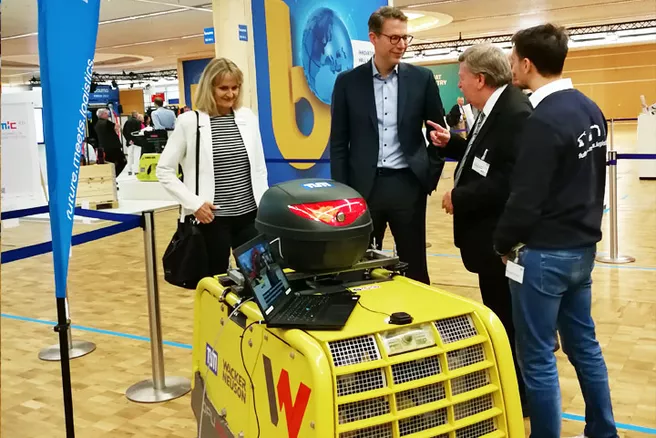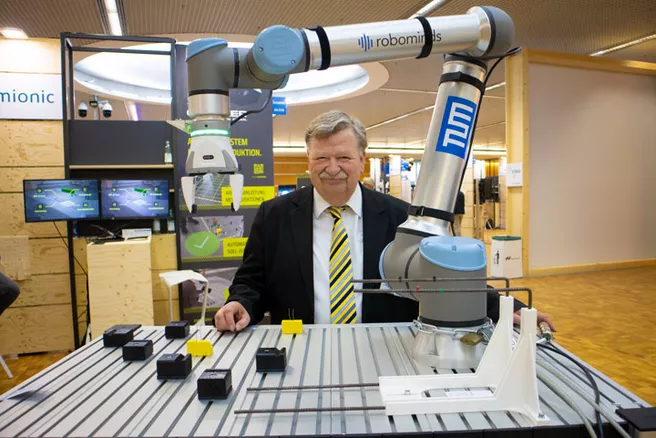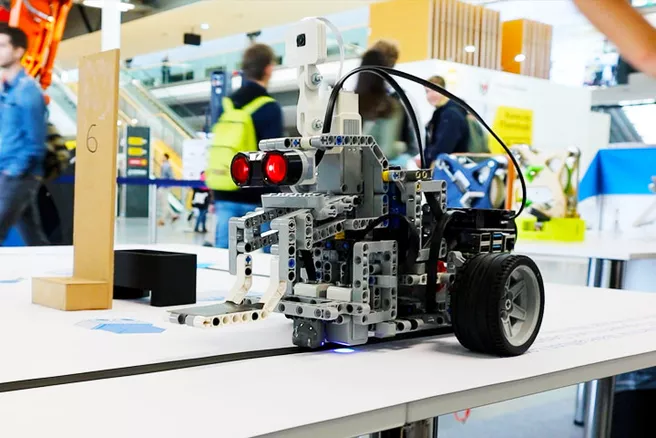The TUM scientists were also able to present these new developments to Markus Blume, Bavarian State Minister for Science and the Arts. He visited the Innovation Lab at bauma on Friday. In this context, research associate Maximilian Schöberl presented him with the collaborative, autonomous vibratory plate. As a collaborating robot or cobot, the vibratory plate creates a halving of process time through synchronized machine use. An autonomous vibratory plate and the 3D excavator control of a machine operator share a digital terrain model. The human thus controls complex, dynamic processes as master in a safe working environment and the vibratory plate follows with repetitive activities.
Another illustrative example from the fml chair at the fair on the subject of cobots is a picking robot. It can help craftsmen with their work. In the bauma example, the picking robot placed reinforcing steels for reinforced concrete construction in a specified manner and connected them by means of a twisted-in wire. The example serves as a basis for discussion of the practical use of such robots in the trades. The aim is to relieve the physical burden on humans and outsource repetitive tasks in order to counteract the shortage of skilled workers in the skilled trades.
On Wednesday, the chair was supported by the student advisory service of the TUM School of Engineering and Design. School classes visiting bauma were able to find out about engineering degree programs such as mechanical engineering or civil engineering. At their information booth, the advisors demonstrated a mobile robot made of building blocks that automatically recognizes the routing and unloading points of containers.
More about the Chair of Materials Handling, Material Flow, Logistics: www.mec.ed.tum.de/fml
More about the degree programs at the TUM School of Engineering and Design


